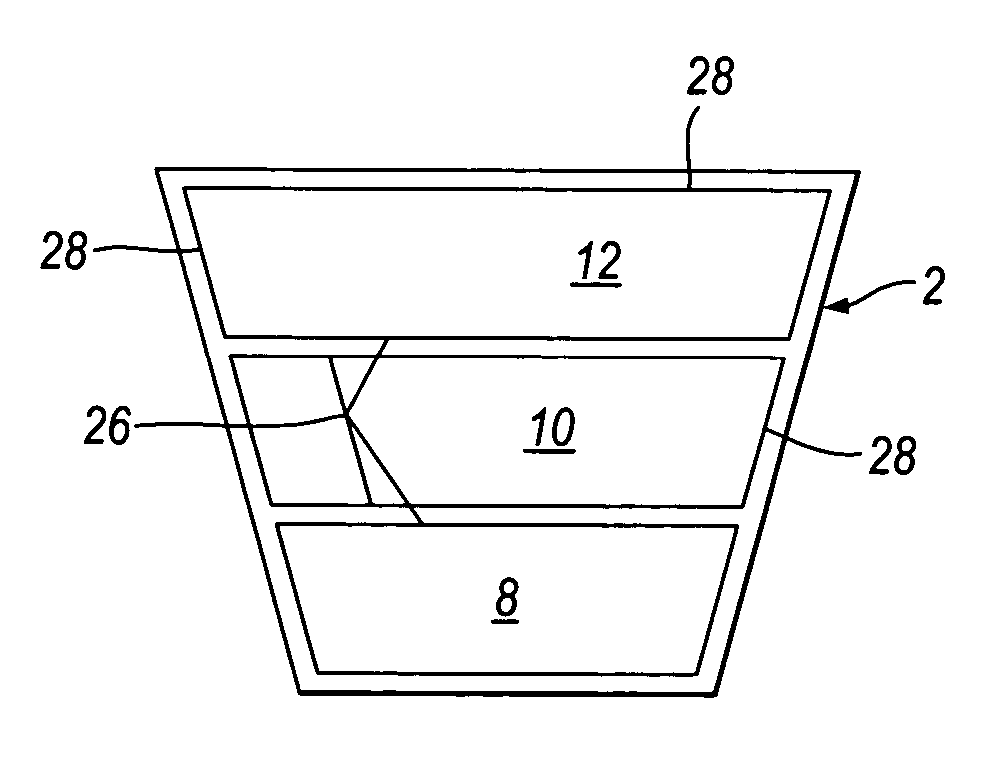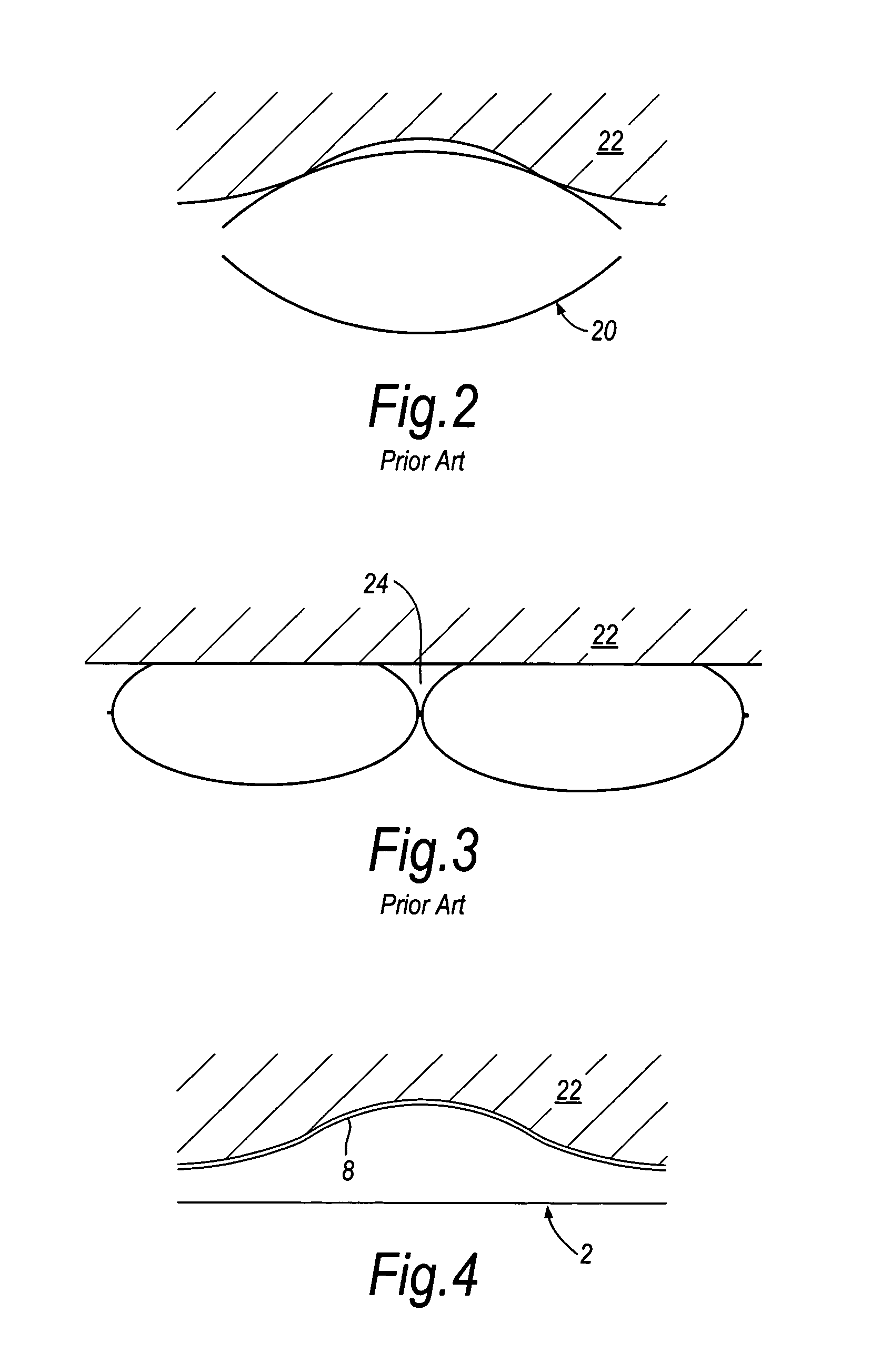Compression device for the limb
- Summary
- Abstract
- Description
- Claims
- Application Information
AI Technical Summary
Benefits of technology
Problems solved by technology
Method used
Image
Examples
example 1
[0042]Two adjacent cells of a device similar to that shown in FIG. 1 were the subject of a finite element analysis to simulate the pressure profile experienced by the limb when such a device is used. The analysis was conducted assuming a cell construction such as that used in FIG. 3 and compared to a cell construction such as that used in FIG. 7 where the cells have side walls. The analysis was conducted using Abacus UK Ltd software version 6.41. FIG. 11 shows the profile generated for the device of FIG. 3 where the cells are of a simple bag-like construction. The pressure distribution is uneven showing peaks at the edge of each cell which fall rapidly to a large area of zero pressure between the cells. The pressure is also depressed at the centre of each cell. By contrast the pressure distribution shown in FIG. 12 for the device of FIG. 7 is much more even with an even pressure across the cell width and only a small area of zero pressure between the cells. These figures show the ad...
PUM
 Login to View More
Login to View More Abstract
Description
Claims
Application Information
 Login to View More
Login to View More - R&D
- Intellectual Property
- Life Sciences
- Materials
- Tech Scout
- Unparalleled Data Quality
- Higher Quality Content
- 60% Fewer Hallucinations
Browse by: Latest US Patents, China's latest patents, Technical Efficacy Thesaurus, Application Domain, Technology Topic, Popular Technical Reports.
© 2025 PatSnap. All rights reserved.Legal|Privacy policy|Modern Slavery Act Transparency Statement|Sitemap|About US| Contact US: help@patsnap.com



